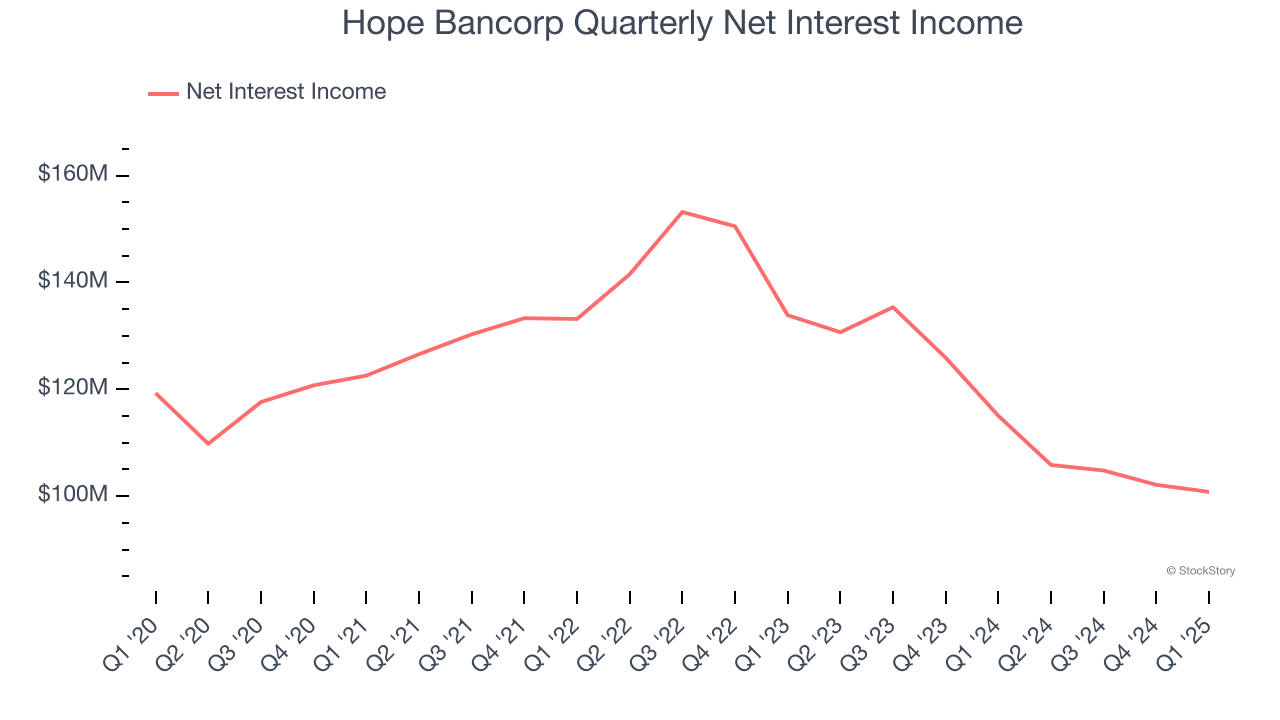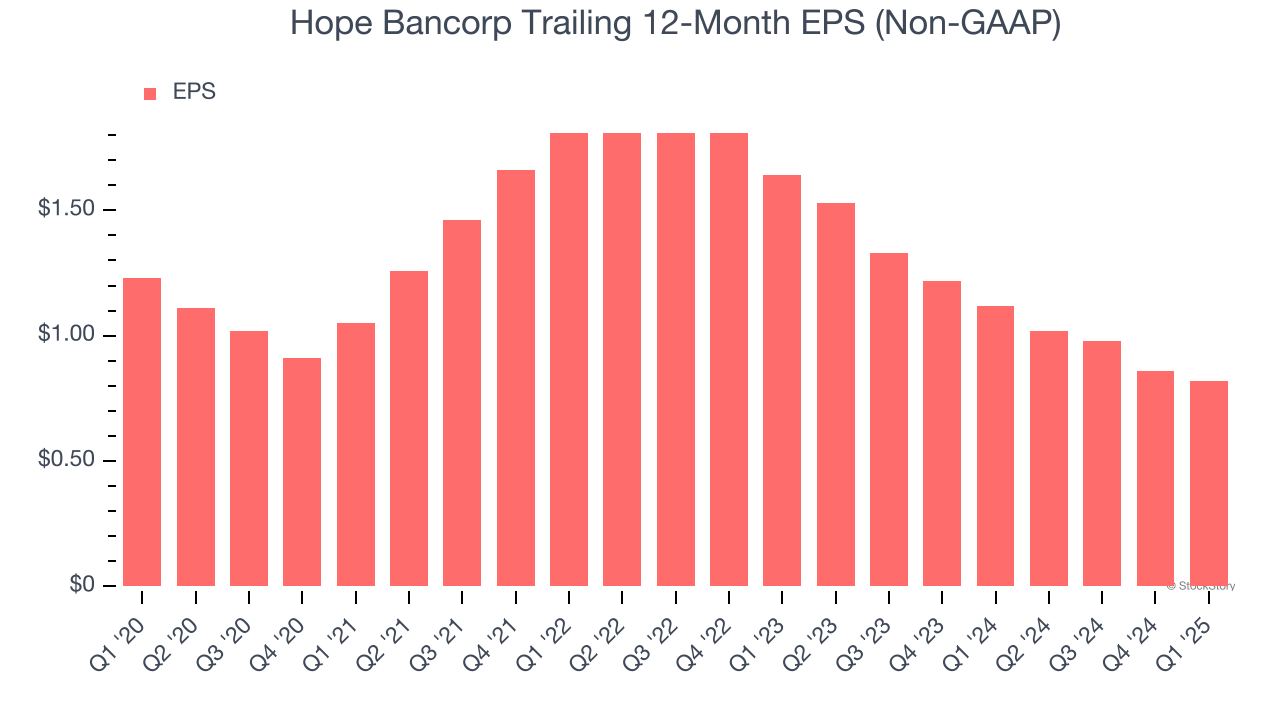
Over the past six months, Hope Bancorp’s shares (currently trading at $10.02) have posted a disappointing 18.1% loss, well below the S&P 500’s 1.7% gain. This was partly due to its softer quarterly results and might have investors contemplating their next move.
Is there a buying opportunity in Hope Bancorp, or does it present a risk to your portfolio? Dive into our full research report to see our analyst team’s opinion, it’s free.
Why Do We Think Hope Bancorp Will Underperform?
Even with the cheaper entry price, we're cautious about Hope Bancorp. Here are three reasons why you should be careful with HOPE and a stock we'd rather own.
1. Declining Net Interest Income Reflects Loan Book Weakness
Net interest income commands greater market attention due to its reliability and consistency, whereas non-interest income is often seen as lower-quality revenue that lacks the same dependable characteristics.
Hope Bancorp’s net interest income has declined by 3.2% annually over the last four years, much worse than the broader bank industry. This was driven by both a decrease in its outstanding loans and net interest margin, which represents how much a bank earns in relation to its outstanding loan book.

2. Deteriorating Efficiency Ratio
Topline growth alone doesn't tell the complete story - the profitability of that growth shapes actual earnings impact. Banks track this dynamic through efficiency ratios, which compare non-interest expenses such as personnel, rent, IT, and marketing costs to total revenue streams.
Investors focus on efficiency ratio changes rather than absolute levels, understanding that expense structures vary by revenue mix. Counterintuitively, lower efficiency ratios indicate better performance since they represent lower costs relative to revenue.
Over the last four years, Hope Bancorp’s efficiency ratio has swelled by 15.9 percentage points, hitting 70.3% for the past 12 months. Said differently, the company’s expenses have increased at a faster rate than revenue, which is usually raises questions in mature industries (the exception is a high-growth company that reinvests its profits in attractive ventures).

3. EPS Trending Down
Analyzing the long-term change in earnings per share (EPS) shows whether a company's incremental sales were profitable – for example, revenue could be inflated through excessive spending on advertising and promotions.
Sadly for Hope Bancorp, its EPS declined by 7.8% annually over the last five years, more than its revenue. This tells us the company struggled because its fixed cost base made it difficult to adjust to shrinking demand.

Final Judgment
We cheer for all companies supporting the economy, but in the case of Hope Bancorp, we’ll be cheering from the sidelines. Following the recent decline, the stock trades at 0.6× forward P/B (or $10.02 per share). While this valuation is optically cheap, the potential downside is huge given its shaky fundamentals. There are more exciting stocks to buy at the moment. We’d recommend looking at a dominant Aerospace business that has perfected its M&A strategy.
Stocks We Like More Than Hope Bancorp
Donald Trump’s victory in the 2024 U.S. Presidential Election sent major indices to all-time highs, but stocks have retraced as investors debate the health of the economy and the potential impact of tariffs.
While this leaves much uncertainty around 2025, a few companies are poised for long-term gains regardless of the political or macroeconomic climate, like our Top 5 Growth Stocks for this month. This is a curated list of our High Quality stocks that have generated a market-beating return of 183% over the last five years (as of March 31st 2025).
Stocks that made our list in 2020 include now familiar names such as Nvidia (+1,545% between March 2020 and March 2025) as well as under-the-radar businesses like the once-micro-cap company Kadant (+351% five-year return). Find your next big winner with StockStory today.


